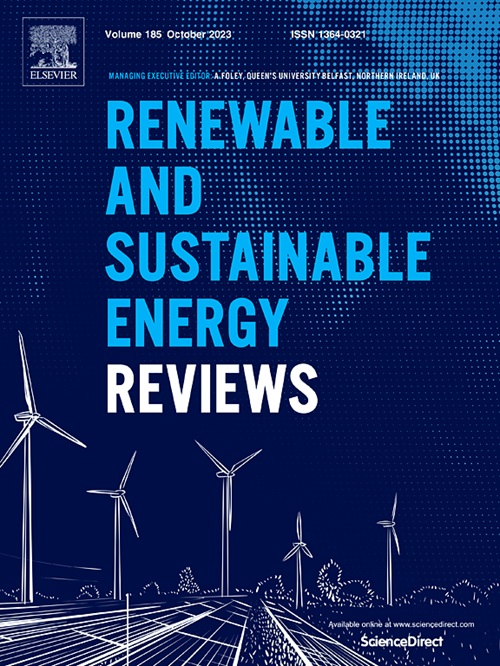过渡金属碳化物/氮化物满足金属有机框架:超级电容器电极中的协同效应
IF 16.3
1区 工程技术
Q1 ENERGY & FUELS
引用次数: 0
摘要
金属有机骨架(MOF)/过渡金属碳化物/氮化物(MXene)复合材料作为超级电容器电极是目前研究的热点。mof具有可调节的孔隙结构、超高的比表面积和丰富的氧化还原位点,但导电性差,结构不稳定。MXenes具有丰富的官能团、良好的机械强度和高导电性,但其层间堆积和易氧化等问题有待解决。mof和MXenes的复合可以通过协同效应有效地弥补双方的不足。本文综述了各种合成策略,并分析了它们在界面结合强度和大规模制备方面的各自优势,重点介绍了界面工程策略。结合密度泛函理论(DFT)分析,揭示了MOF/MXene复合材料在增强电子/离子输运和结构稳定性、模板效应和抗团聚性能方面的协同效应。此外,本文重点介绍了MOF/MXene复合材料在超级电容器中的应用,强调了其在柔性器件中的良好应用潜力。最后,展望了柔性器件在界面键合控制、绿色合成、避免竞争、成本控制以及集成化和规模化制造等方面未来的机遇和挑战,为高性能储能材料的发展提供参考。本文章由计算机程序翻译,如有差异,请以英文原文为准。
Transition metal carbides/nitrides meet metal-organic frameworks: synergistic effects in supercapacitor electrodes
Metal organic framework (MOF)/transition metal carbides/nitride (MXene) composites as supercapacitor electrodes are currently a research hotspot. MOFs have adjustable pore structure, ultra-high specific surface area, and abundant redox sites, but poor conductivity and unstable structure. MXenes have rich functional groups, good mechanical strength, and high conductivity, but their interlayer stacking and easy oxidation need to be solved. The composite of MOFs and MXenes can effectively compensate for the shortcomings of both sides through synergistic effects. This article reviews synthesis strategies and analyzes their respective advantages in interface bonding strength and large-scale preparation, with a focus on interface engineering strategies. Combined with density functional theory (DFT) analysis, the synergistic effects of MOF/MXene composites in enhancing electron/ion transport and structural stability, template effect and anti-agglomeration properties were revealed. Furthermore, the article focused on the application of MOF/MXene composites in supercapacitors, emphasizing their good practical potential in flexible devices. Finally, the future opportunities and challenges in interface bonding control, green synthesis, competition avoidance, cost control, as well as integration and large scale manufacturing of flexible devices were prospected, providing a reference for the development of high-performance energy storage materials.
求助全文
通过发布文献求助,成功后即可免费获取论文全文。
去求助
来源期刊

Renewable and Sustainable Energy Reviews
工程技术-能源与燃料
CiteScore
31.20
自引率
5.70%
发文量
1055
审稿时长
62 days
期刊介绍:
The mission of Renewable and Sustainable Energy Reviews is to disseminate the most compelling and pertinent critical insights in renewable and sustainable energy, fostering collaboration among the research community, private sector, and policy and decision makers. The journal aims to exchange challenges, solutions, innovative concepts, and technologies, contributing to sustainable development, the transition to a low-carbon future, and the attainment of emissions targets outlined by the United Nations Framework Convention on Climate Change.
Renewable and Sustainable Energy Reviews publishes a diverse range of content, including review papers, original research, case studies, and analyses of new technologies, all featuring a substantial review component such as critique, comparison, or analysis. Introducing a distinctive paper type, Expert Insights, the journal presents commissioned mini-reviews authored by field leaders, addressing topics of significant interest. Case studies undergo consideration only if they showcase the work's applicability to other regions or contribute valuable insights to the broader field of renewable and sustainable energy. Notably, a bibliographic or literature review lacking critical analysis is deemed unsuitable for publication.
 求助内容:
求助内容: 应助结果提醒方式:
应助结果提醒方式:


